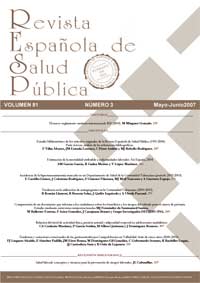Return to work after a non-work related sick spell: the role of age, sex, economic activity and Autonomous Community
Abstract
Background: To describe the duration of non-work related sickness absences incidents according to age, sex, economic activity and Autonomous Community. Methods: The sample of non-work related sick spells included 76,598 incident cases started in 2002 among workers cover by the general regime of the Social Security system, and managed by an insurance company. The median and intercuartils range were estimated by sex, age, economic activities and Autonomous Comunnity. Probability ratio of continuing out of work (PRCOW) were compared among Autonomous Comunities, after adjusting by sexo, age and economic activities, taking Navarra as reference, using a log-logistic regression model with a gamma distribution. Results: The 25% of cases there were returned to work at 4º day, the 50% at 90 day; and the 75% at 26º day. Extremadura (PCOW=2,7; IC95%: 2,4-3,1) and Galicia (2,6; 2,4-2,9) showed the highest differences with Navarra. There were also statistically significant differences among economic activities after adjusting by age and sex. Conclusions: Return to work after a non-work related sick spell is a complex process, which is influenced by age, sex, economic activities and autonomous community.Downloads
Published
2008-03-14
Issue
Section
ORIGINALS

